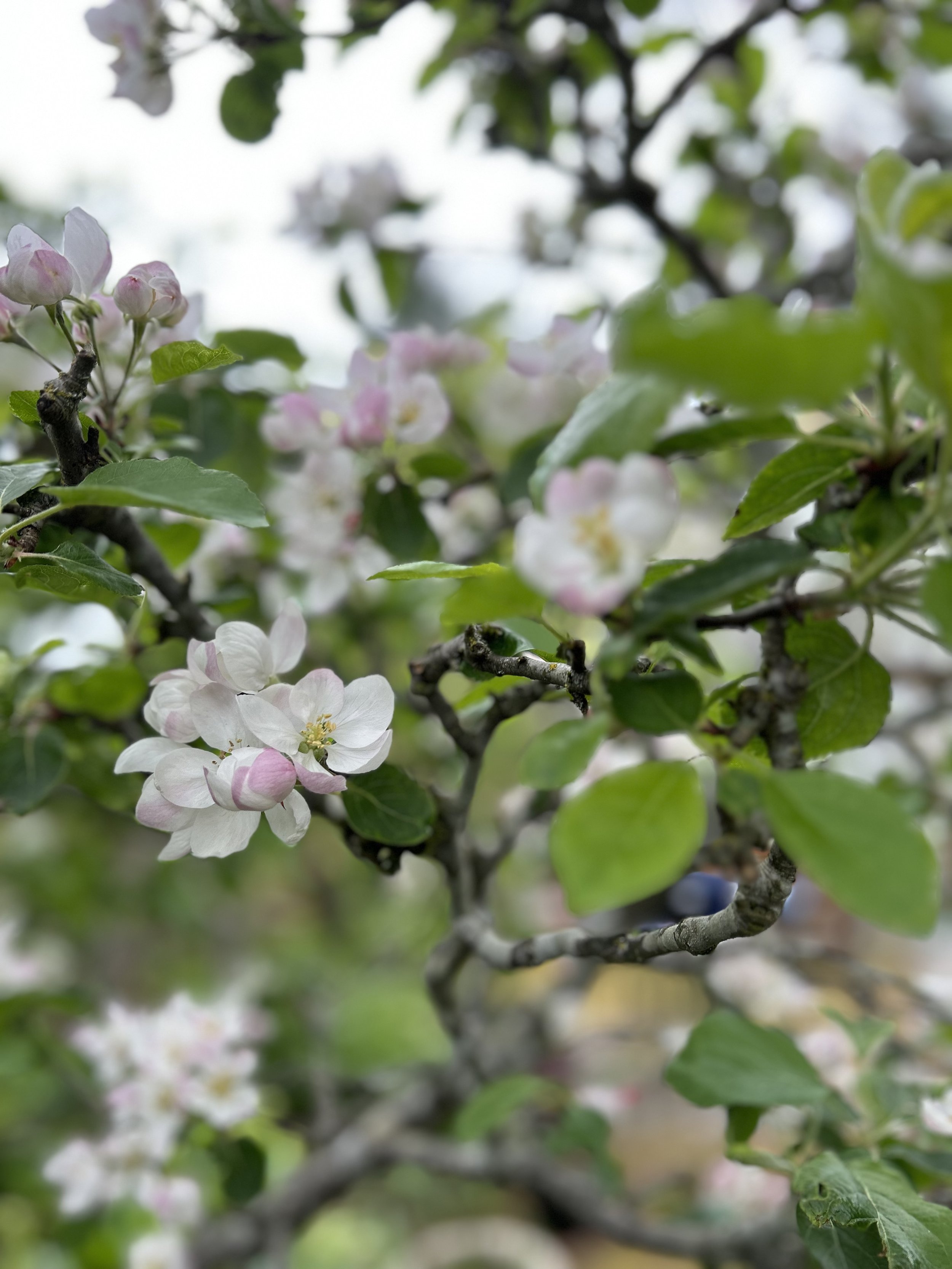I fill it up in the order of things received, till I get to the end, and then I get a new book that looks different from the previous one. I know which part of my life, which months, are in the yellow book with the calligraphy on it, which part is in the book with the red rubbery cover imprinted with a Chinese poem, which part is in the hardcover spiral notebook with the coffee stains on the front (and back). Etc. But my current book is a Moleskine journal, a black hardcover ("moleskine" oilcloth cover) that has a built-in accordion pocket in the back, a ribbon for a bookmark, and an attached stretchy band to go around the whole thing and keep all the collected loose scraps inside. It has graph paper pages (usually I like blank pages, and definitely don't like ruled pages, but have been enjoying the geometricness of these pages underneath my far-from-geometric jottings).
One book, full of a lot of different stuff, and yesterday I took to pasting Post-It flags throughout so that I could find things more easily. There are four colors of flags, and I found that I could shimmy all the pages into one of four arbitrary categories, pretty easily, though the groupings might only make sense to me!
Red: Rabbi Ted's teachings (Torah study, a class on the Kabbalistic wisdom of the alef-bet) and my Israel journal. Also, all of the Five-Element and Traditional Chinese Medicine notes I've taken in the past few months.
Yellow: Business/work plans, projects, musings.
Green: Everything that has to do with Bastyr & naturopathic medicine. Notes for the Determinants of Health course I'm teaching next quarter, conversations and meetings about Bastyr's vision/mission reworkings, meetings about the Foundations of Naturopathic Medicine textbook that I'm peripherally involved with.
Blue: The wider conversations; collective exploration; notes from when Tom Atlee of the Co-Intelligence Institute came up to Seattle and talked about his "five favorite large-group collaborative practices" (out of the dozens that he's familiar with, he finds the most effective to be World Cafe, Open Space Technology, Future Search, Dynamic Facilitation, and Citizen Deliberative Council); phone numbers such as those for Open Space friends Avner, Tova, (you could have their phone numbers, too, by seeing Israel on the Open Space world map!) and Chris; and most recently a preliminary mind-map for an Open Space for Giving and Receiving and Flourishing (a sprout seeded at the first such Giving Conference held in Chicago last year), that Ashley's begun to concoct. Dream and poetry fragments get this flag, too.
I like this book, a lot! I think my next one will be just like it (but maybe I'll get the Post-It flags with the purple and pink ones next time).






















